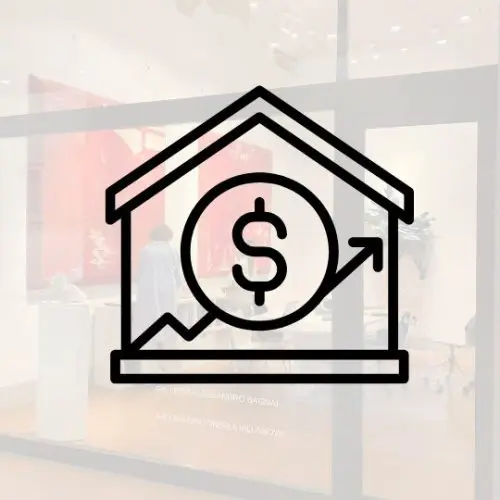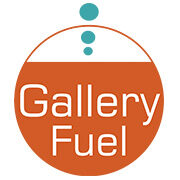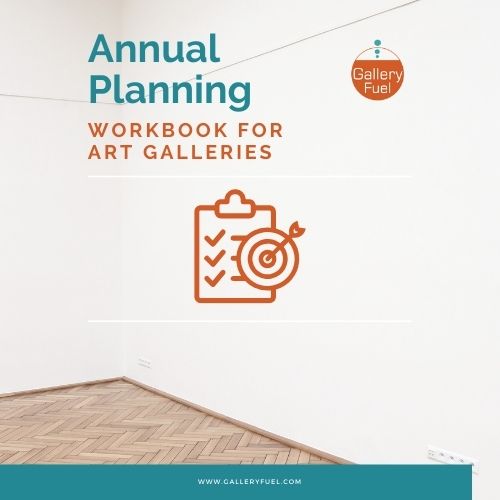So, you’re opening an art gallery—bravo! It’s a bold and imaginative leap that can enrich your community, spotlight emerging talent, and bring powerful visions to life. But before the grand opening and the champagne corks pop, there’s a real-world challenge to tackle: funding. Turning your artistic ambition into a sustainable business requires a solid financial foundation.
powerful visions to life. But before the grand opening and the champagne corks pop, there’s a real-world challenge to tackle: funding. Turning your artistic ambition into a sustainable business requires a solid financial foundation.
Turning your artistic vision into a sustainable business takes planning, persistence, and a solid financial foundation. Don’t worry—we’ll go through your main options for funding an art gallery and help you choose what works best for your goals and risk tolerance.
Whether this is your first gallery or your next big leap into a new market, I hope you’ll find strategies here to help you build with confidence and clarity.
Understanding Funding Options for Art Gallery Start-ups
Running an art gallery is rewarding, but it’s also resource-intensive. From securing space to promoting artists and hosting exhibitions, every decision ties back to funding. Lucky for you, you have options—traditional bank loans, crowdfunding, private investors, partnerships, or even tapping personal savings.
Before you start knocking on doors (or launching a crowdfunding campaign), take some time to get organized and financially prepared.
Here are a few guiding principles:
- Financial preparation is just as important as your curatorial vision.
You might have an incredible artist roster or a strong exhibition plan, but investors and lenders want to see hard numbers. A thoughtful business plan and clear financial projections show that you understand your market and have a roadmap to profitability.
- Be transparent and realistic.
When you’re upfront about your challenges and goals, you build trust. Transparency about your finances and plans goes a long way in attracting supporters who believe in your vision.
- Start small but think long-term.
Focus on gaining traction—build community, hold collaborative events, and manage expenses carefully. It’s better to grow sustainably than to stretch your resources too thin early on.
- Relationships matter.
Investors, partners, and even crowdfunders often invest in you just as much as your gallery concept. Build connections and credibility early. Confidence and sincerity sell.
No funding path is completely risk-free, but understanding the trade-offs will help you make smart, sustainable choices. Your first step is putting a business plan together. Let’s look at what’s involved with that.
Creating a Gallery Business Plan to Attract Investors
Creating a solid art gallery business plan starts with a clear vision and a good handle on the art market. Show investors you know your gallery’s niche—whether it’s spotlighting local talent, avant-garde international artists, or a mix of fresh, emerging voices. Highlight your mission, target audience, competition, and what makes your gallery stand out. Today, many galleries feel a little too similar to one another. Give a lot of thought to how you can shake things up in your chosen market to increase artist and client advocacy that will make investors happy.
The financial side is just as important. Lay out how you’ll make money—art sales, memberships, events—and be upfront about startup costs, operating expenses, and when you expect to break even. Being clear and transparent here builds trust and confidence.
Think of your business plan as more than just a pitch—it will really be your roadmap. Let it help you make decisions about marketing, staffing, exhibits, and community outreach. You might add a timeline with key milestones, like your opening, upcoming shows, and growth goals, to show you’re ready to make it all happen.
Investors want to see both your passion and your plan. They’ll look for proof that there’s demand for your gallery—interest from collectors, artist partnerships, or support from cultural groups. They’ll also want to know you’ve thought about risks and have a strong team in place. At the end of the day, your plan should tell the story of your gallery’s vision while proving you’ve got a solid strategy to back it up.
What should be included in your gallery’s business plan?
- A clear mission and curatorial vision
- Conduct a thorough market analysis to understand trends and the target audience.
- Clearly articulate your gallery’s unique value proposition.
- Provide financial projections for the next 3-5 years showing expected revenue, expenses, and profitability.
- Start-up and operational cost breakdown
- Outline marketing and sales strategies, including online presence and partnerships.
- Highlight the experience and expertise of your management team.
- Risk mitigation strategies
With your plan created and ready to go, it’s time to decide on which financing options you want to pursue. You’ll likely need a mix of sources.
Let’s take a look at some standard options and the advantages or disadvantages they might have for you.
Funding Path #1: Traditional Bank Loans
One popular option is obtaining traditional bank loans. Banks typically offer competitive interest rates and flexible repayment terms, making it easier for you to budget and manage your finances over those first crucial years. Banks also have a reputation for reliability and stability, which can instill confidence in potential investors.
To obtain a traditional bank loan, you’ll need to provide financial documents, such as business plans, financial statements, and credit history. A strong credit history and collateral can only increase your chances of loan approval. Traditional bank loans can provide the necessary capital to invest in new artist recruitment, hire staff, renovate gallery spaces, or expand marketing efforts.
This might seem obvious, but it’s also wise to explore multiple banks, comparing their loan terms and interest rates to secure the best deal. Be prepared with all necessary supporting documents, including tax returns, bank statements, and any collateral details if you’re applying for a secured loan.
Lastly, consulting with financial advisors can help you navigate the loan application process more efficiently and increase your likelihood of success.
Advantages:
- Access to larger amounts of funding.
- Fixed interest rates and repayment terms make budgeting easier.
- Builds your business credit.
Risks:
- You’re on the hook for repayment even if your gallery struggles.
- It can be hard to qualify for if you’re just starting out and lack collateral or revenue history.
- Interest adds up—especially with longer terms.
Funding Path #2: Crowdfunding Your Launch
Crowdfunding has gained significant popularity as a funding option for art galleries. It allows you to raise money through small contributions from a large number of people. By leveraging social media and online platforms, you can reach a wider audience and attract potential investors or art enthusiasts.
Crowdfunding offers several advantages, such as connecting with a community that shares a passion for art, creating a sense of collaboration and support, and reducing reliance on traditional lenders. It allows you to maintain control over your business and artistic freedom without the pressure of strict repayment schedules or giving up ownership.
Launching a successful crowdfunding campaign for your gallery startup requires thoughtful preparation, a compelling story, and consistent engagement with potential backers.
Start by crafting a strong campaign narrative that clearly communicates your gallery’s purpose and why it matters now. Be transparent with your funding goals—set targets that are both realistic and inspiring, and include a clear breakdown of how the contributions will be used. Whether it’s for renovations, exhibitions, artist collaborations, or community outreach, people want to know exactly what their support will accomplish.
Visual storytelling plays a crucial role in gaining support. Eye-catching images or well-edited videos can go a long way in conveying your vision and evoking excitement. Amplifying your message using social media and your existing networks is also a smart strategy to build buzz around the campaign. Choose the right platform for your goals—Kickstarter works well for specific projects, while Patreon may be better suited for ongoing engagement and support.
Equally important is the value you offer in return. Create tiered rewards that appeal to backers at different levels, such as limited-edition prints, exclusive invitations to gallery events, or behind-the-scenes access. These perks not only incentivize pledges but also help foster a sense of connection to your gallery’s mission. Get creative with how you reward these early supporters. Throughout the campaign, you will want to show appreciation and keep your backers informed with regular updates on progress and milestones. Gratitude and transparency go a long way in turning one-time supporters into long-term advocates.
Advantages:
- No repayment required—these are donations or pre-purchases, not loans.
- Great marketing tool; builds an audience before your gallery even opens.
- Validates your concept with the public.
Risks:
- Success isn’t guaranteed. Most campaigns fail without serious marketing.
- Time-consuming to manage and promote.
- You may need to pay platform fees and fulfillment costs for rewards.
Funding Path #3: Angel Investors
Angel investors—typically high-net-worth individuals, often entrepreneurs or seasoned professionals—provide capital to startups in exchange for equity or convertible debt. Unlike traditional banks or venture capitalists, they tend to be more receptive to creative ventures, especially those with distinctive concepts or strong community engagement. For your gallery, this openness can make angel investors a valuable source of support, offering not only funding but also strategic guidance, industry connections, and mentorship.
To attract angel investment, you must have that clear and compelling business plan ready to go. A solid understanding of the art market, paired with a well-structured approach to utilizing the investment, builds investor confidence and increases the likelihood of support.
A standout pitch deck is also something that might be a helpful tool. This presentation can be more visual than your business plan and help convey your passion. It should highlight your gallery’s mission and business model, showcase projected financials, and present a realistic path to profitability. Emphasizing your gallery’s unique value proposition—what sets it apart from others—can significantly strengthen your case.
Networking also plays a pivotal role. Building relationships through industry events, art associations, entrepreneurial meetups, and platforms like AngelList can open doors to potential investors. Personal connections often lead to more meaningful conversations and interest.
You should also be prepared to field tough questions about your numbers. Detailed timelines and growth strategies must be clearly defined. Being transparent and confident in these areas signals professionalism and readiness. Finally, it’s important to carefully consider the trade-offs involved—angel investments often come with expectations of influence, such as board seats or input on major decisions —so be thoughtful about how much control you’re willing to share.
Advantages:
- Access to larger early-stage funding without having to qualify for a loan.
- You gain a strategic partner—someone who may offer mentorship, connections, and business expertise.
- If aligned with your mission, they can become passionate champions of your gallery.
Risks:
- You’ll likely need to give up equity—a share of future profits and possibly control.
- Misalignment in vision or strategy can create friction.
- Some investors expect faster returns than a creative business can realistically offer.
Funding Path #4: Partnerships and Collaborations
Exploring partnerships and collaborations can be a fantastic strategy for art gallery financing. By seeking partnerships with local businesses or organizations that support the arts, you can access additional funding, promotional opportunities, and potential customer bases.
Sometimes, the best way to expand your resources is to share them. Strategic partnerships—whether with fellow businesses, nonprofits, or even educational institutions—can bring in both capital and creative synergy. This isn’t always direct funding, but the right collaboration can eliminate costs and amplify visibility.
To prepare for using partnerships and collaborations as a financing option for a start-up art gallery, begin by identifying potential partners whose missions or audiences align with yours, such as the local hospitality industry, art supply stores, universities, cultural organizations, or corporate sponsors.
Clearly define what you can offer in return, whether it’s exposure, co-branding opportunities, shared space, or event tie-ins. Draft a formal partnership proposal that outlines roles, expectations, and financial arrangements to ensure clarity and alignment. Establish clear boundaries by defining responsibilities to prevent confusion and maintain a smooth working relationship.
Advantages:
- Shared costs (space, marketing, events) reduce the financial load on you.
- Builds community and creates mutually beneficial exposure.
- Can lead to long-term relationships that sustain your gallery beyond the startup phase.
Risks:
- Creative differences or mismatched expectations can sour partnerships.
- Revenue sharing may limit your profit margins.
- You’ll need strong communication and possibly legal agreements to protect all parties.
By tapping into partnerships, you open the door not just to funding but to shared creativity, reach, and resilience. Sometimes, collaboration is the currency that carries your gallery further than money ever could.
Funding Path #5: Using Personal Savings or Assets
Leveraging personal savings and assets can be a viable strategy for funding your art gallery. It’s a path I see most often taken. Before committing personal resources, you want to evaluate your financial standing and determine how much you can comfortably invest without jeopardizing your financial stability. Yikes!
Personal savings can be used to cover startup costs or expand operations, while asset-based financing allows you to use assets such as real estate or artwork as collateral.
Consulting a financial advisor is highly recommended, especially if you are considering accessing retirement funds. Please ensure you maintain a safety net to protect your personal financial security in emergencies.
Advantages:
- Full control—no approval process, no debt, no giving up equity.
- Shows investors and lenders you’re confident in your vision.
Risks:
- You bear the full financial risk.
- It can add pressure and limit your personal financial flexibility.
- Potential long-term impact if things go sideways (especially with retirement savings).
To the Point
Launching an art gallery is an exciting journey that blends creativity with entrepreneurship. While funding is one of the most significant hurdles, it’s also an opportunity to build a solid foundation for your gallery’s future. Whether you choose traditional bank loans, crowdfunding, angel investors, partnerships, or personal savings, the key is to align your funding strategy with your vision, goals, and risk tolerance.
Remember, no single path is perfect, and many successful galleries rely on a mix of funding sources to balance flexibility, control, and sustainability. A well-prepared business plan, clear communication, and a strong network will not only help you secure funding but also establish trust and credibility with your supporters.
Ultimately, your passion, persistence, and strategic planning will set the stage for a gallery that not only thrives financially but also makes a meaningful impact on the art world and your community. With the right approach, your vision can become a reality—one that inspires, connects, and endures.
You might also find this workbook helpful.



Leave a Reply